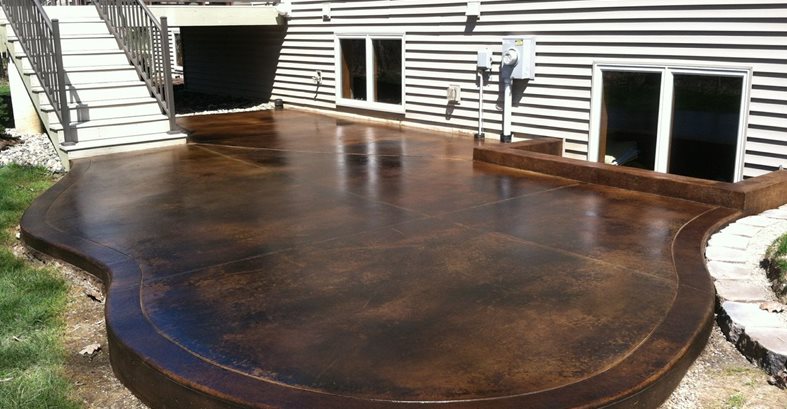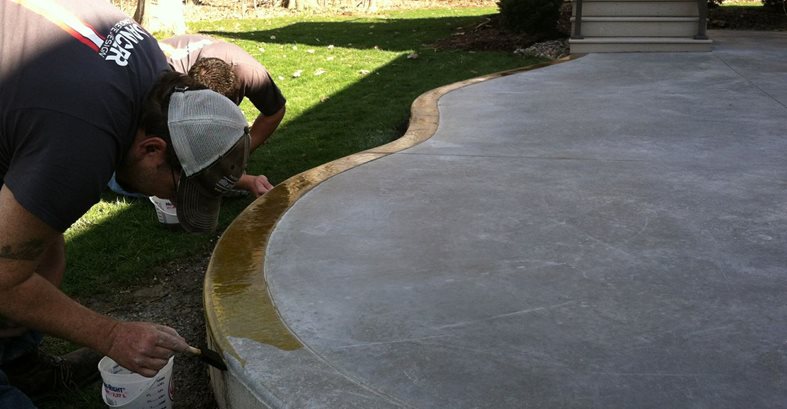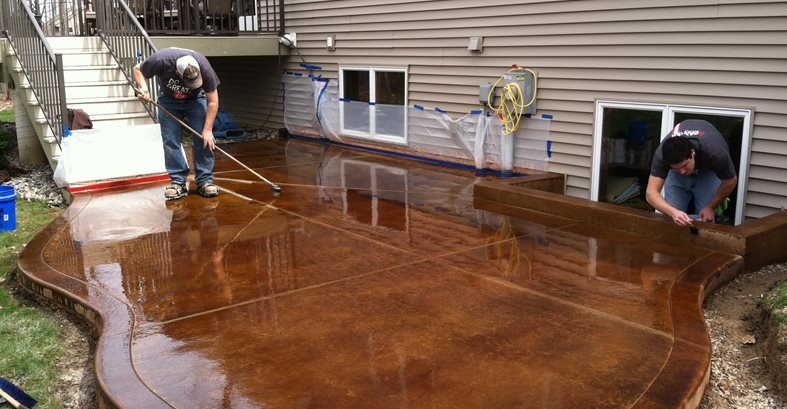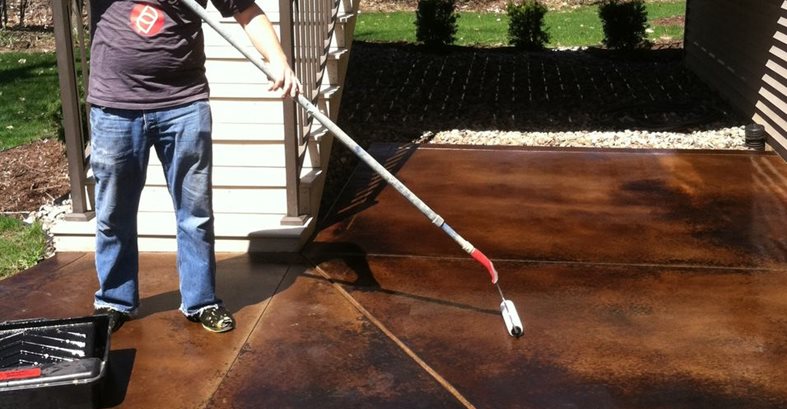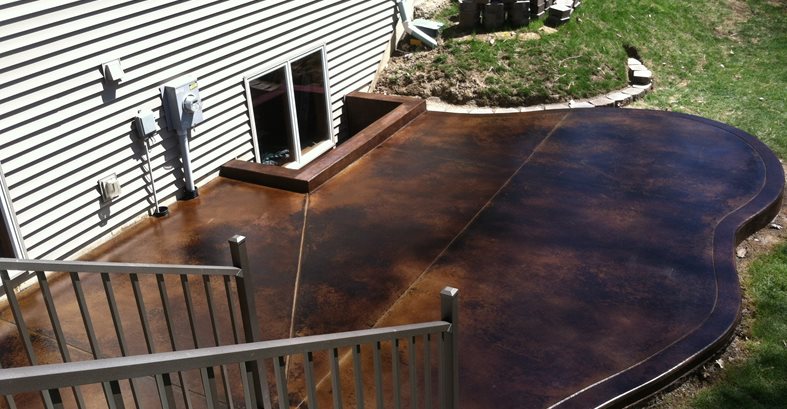Sometimes design inspiration comes from unexpected sources. In the case of this beautiful stained concrete patio, it all began with a YouTube video.
“This was the homeowner’s first time using a decorative concrete surface around their home. They found my company through a YouTube video and liked another project we completed,” says Nick Dancer of Dancer Concrete Design, a company that specializes in stained and polished concrete and epoxy coatings.
Dancer was contacted before the concrete was even poured to help come up with the curvilinear shape and other design options, such as the border. The homeowners chose the color after viewing a sample board and pictures of other projects Dancer had completed using the same stain. The concrete was poured in the late fall of 2012, and Dancer stained it the following spring.
“It seems that people want to spend a little bit more to bring color and design into a space rather than just pour regular concrete. Reactive acid stains are a great solution as they chemically react with the concrete to create a color that becomes a permanent part of the concrete surface,” says Dancer.
To prepare the concrete before staining, Dancer and his crew sanded the surface with a grinder and 100-grit sandpaper. “This helps ‘open up’ the concrete and remove debris,” he says. The color used was a black reactive chemical stain from Direct Colors, diluted at a concentration of 1 part stain to 4 parts water to produce rich, dark coffee tones.
“Reactive chemical stains all work differently and temperature, humidity, and sun exposure all affect the color. The client was home during the staining process so they could guide us further in the color intensity they wanted,” says Dancer. The result of this unique chemistry between the stain and the concrete is a beautiful one-of-a-kind variegated look.
The crew applied the stain to the border first, using a foam brush. Then they sprayed the stain over the entire slab, working it in with a soft bristle brush. This was followed by the application of another light mist of stain to remove any brush marks. Another coat of stain was also applied to the border to darken it slightly from the main section of concrete.
To protect the newly stained surface and enhance the color, Dancer sealed the patio with Direct Colors satin-finish acrylic, applied with a roller to ensure even application. To keep the patio looking like new, Dancer recommends reapplying the sealer every few years, depending on use and sunlight exposure.
Materials used
Concrete acid stain: Direct Colors concrete acid stain (chemically reactive, indoor/outdoor), in black
Concrete sealer: Directs Colors sprayable satin-finish sealer
Staining contractor
Nick Dancer
Dancer Concrete Design, Ft. Wayne, Ind.
www.nickdancerconcrete.com
Check out Dancer’s full library of YouTube videos.
Submit your own project photos
See more patio color options
